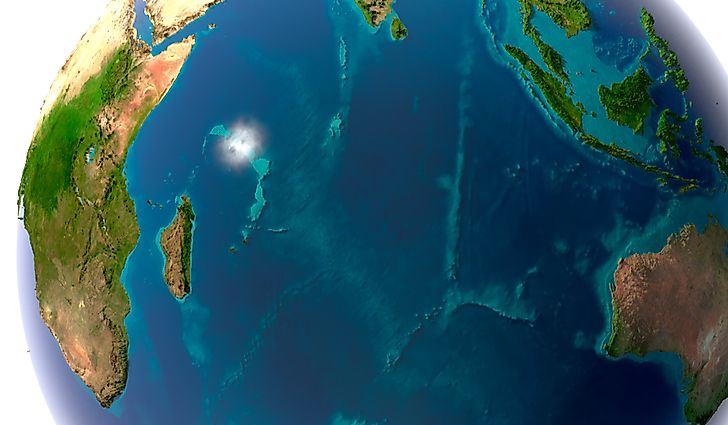What Is The Ninety East Ridge?

The Ninety East Ridge is a ridge located on the floor of the Indian Ocean. The ridge stretches for 5,000 km and has an average width of 200 m, beginning in the Bay of Bengal and extending south to the Southeast Indian Ridge (SEIR). Additionally, the ridge extends further north for several more kilometers but is hidden below sediments of the Bengal Fan. The northern segment of Ninety East Ridge is composed of a sequence of massive individual volcanoes, while the southern portion is tall and nearly continuous. The middle section of the ridge contains a mixture of small seamounts and straight segments. Geologists believe that the diverse features contained within the Ninety East Ridge are the result of its unique formation process. The Ninety East Ridge divides the Indian Ocean into the West Indian Ocean and the eastern Indian Ocean and also separates the Nicobar Fan from the Bengal Fan.
The Composition of the Ninety East Ridge
The Ninety East Ridge is composed primarily of Ocean Island Tholeiites (OIT), which is a type of sub-alkaline basalt rock. Research suggests that rock in the southern part of the ridge is younger than that found on the northern side. Rock in the south has an average age of 43.2 million years, but an age of 81.8 million years in the north. Geologists initially disputed the age of the rock that makes up the Ninety East Ridge, but a more recent dating method, known as Argon-argon dating or Ar-Ar techniques, is now used. In addition to rock, the ridge also contains layers of sediments, some of which are 984 feet thick, whereas others have a thickness of 382 feet. Most of the sediments on the Ninety East Ridge are categorized as pelagic. Research shows that the rate of sediment build-up on the ridge has been slower than in other parts of the ocean.
Formation of the Ninety East Ridge
Geologists have proposed several theories to explain the origin of the Ninety East Ridge, the most famous of which is the hotspot theory. Although widely accepted among many geologists, there is some debate regarding the nature of the hotspots. Some geologists believe that the Kerguelen hotspot was responsible for the formation of the Ninety East Ridge. As the Indo-Australian plate moved north, it passed by the Kerguelen hotspot, creating the ridge. The formation of the ridge stopped because of a reorganization of the boundary between tectonic plates. Geologists continue to analyze the Rajmahal Traps and the Kerguelen Plateau to collect evidence that confirms this theory.
Researching the Ninety East Ridge
The Ninety East Ridge has been surveyed multiple times, mainly for academic reasons. For example, the RV Roger Revelle is a research vessel that surveyed the ridge in 2007. Researchers aboard the vessel collected data, such as seismic and magnetic data, to develop a better understanding of the Ninety East Ridge. The name of the ridge is derived from its location, which is almost exactly parallel to the 90th Meridian, at the center of the Eastern Hemisphere.











